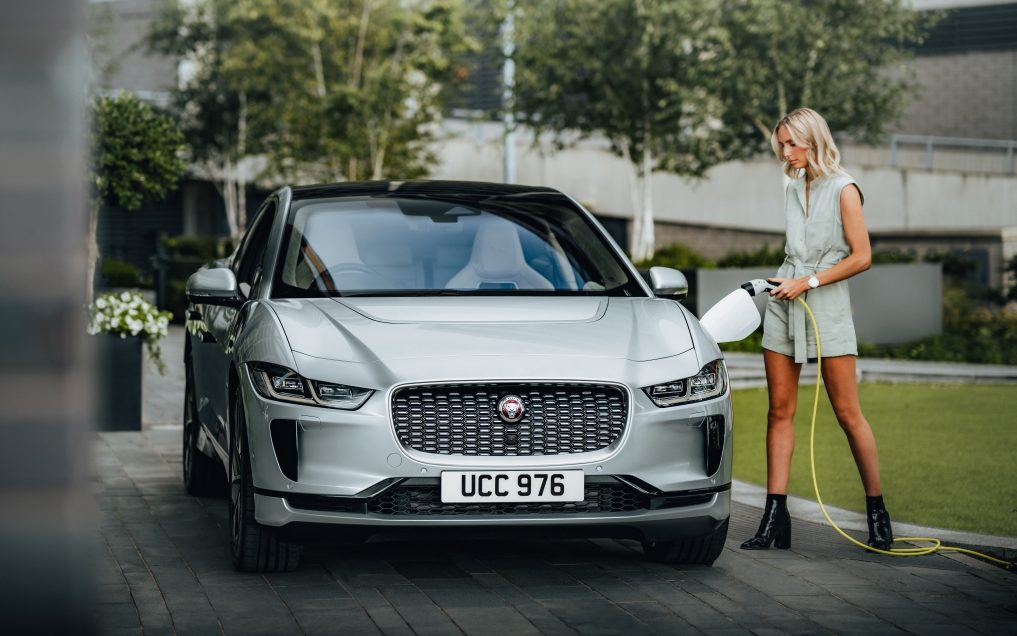How Long Does It Take To Charge An Electric Car?

Different types of electric car charging points nad kW ratings may seem a little overwhelming at first. Naturally, you’ll want to know how long it takes to charge an electric car before hopping behind the wheel of one.
No matter whether you’ve never driven an electric car before, or simply wonder what the different ways of charging an electric car are, this quick guide is for you!
For maximum convenience, this blog post is broken down into 5 different sections. Click the links below to quickly jump between relevant parts of the article.
- How long does it take to charge an electric car
- What affects the charging speed of an EV
- Can you charge an electric car at home
- Top up charging explained
- Different types of electric car chargers
How Long Does It Take To Charge An Electric Car
To be completely honest, it depends on a few different factors. Charging an electric car can take as little as 20 minutes, or as long as an entire day in worst cases. What causes these figures to be so far apart? Continue reading to find out.

What Affects The Charging Speed of An EV
The time it takes to charge an EV all boils down to just 5 different factors:
- Battery Size- a larger battery pack will take more time to charge than a small one.
- Charge Level- naturally, the less charge your battery has the longer it will take to fill up
- Maximum Charging Speed Of The Car- some electric cars will charge faster than others. Most EVs are able to utilize rapid charging points, unlike plug-in hybrids. Make sure that the maximum speed of the charger is either equal or larger than the rate of the eletric car.
- Maximum Charging Speed Of The Charger- this is just as important as the maximum charging speed of your EV. For example, a Tesla Model 3 can gain up to 330 miles (530km) of range in just 30 minutes of charging. However, that can only happen when the car is plugged into a 150kW rapid charger. A slower charger will restrict the maximum charging speed, even if the car itself is capable of charging at a faster rate.
- Outside temperature- you probably noticed that your phone’s battery does not perform well in the cold. The same goes for electric cars and their batteries. The range of an EV will be reduced in cold weather, and the charging time may be extended too.
Can You Charge An Electric Car At Home?
Yes! One of the great things about driving an electric car is that you can charge it right at home. Virtually all EVs come with adapters that let owners charge them from regular outlets.
Note that using your regular power plug is the least efficient way to charge your electric car. An EV may gain just a couple of miles of range per every hour of charging this way. In practice, this means that fully recharging the battery pack may take over a day, depending on the battery capacity. Nonetheless, it’s still a great way of top up charging an EV. What does that mean exactly?
Top Up Charging Explained
As the name suggests, top up charging is all about topping up the battery whenever possible. It proved to be more convenient for owners of electric cars, as opposed to only charging the car after letting the battery run out.
For example, an EV owner will often charge their car at the garage overnight or at their workplace, regardless whether the battery is empty or not. Continuously topping up the battery, as opposed to only charging it after it runs out all the way, is top up charging. Slower charging points are ideal for this.
Different Types Of Electric Car Chargers
As we have already mentioned, there are a few different types of electric car charging points. We can sort them by their maximum charging speed. Let’s start with the slowest one, which is a regular power plug.
Charging At Home- Level 1 Charging (The Slowest Option)
Range- roughly 5 miles (8km) / hour
Charging at home using a conventional socket is great for top up charging, or whenever you want to gain a bit of range over the course of a few hours. Afterall, it’s quite convenient to increase the range of your electric car if it’s going to be parked in one spot either way. It is, however, the slowest way to increase the range of an EV.
If the battery on your EV is completely drained though, you may want to reconsider charging the car using a standard plug at home. It can take well over a day to fully recharge, especially if the battery has a high capacity.
Luckily, there is a way more efficient solution for charging your EV at home!
Charging At Home & Public Stations-Level 2 Charging
Range- up to 40 miles (65km) / hour
Charging at home using a dedicated wallbox is a lot more convenient than a regular plug. You can expect to gain up to 40 miles, or 65 kilometers, of range per hour. An EV left to charge overnight is guaranteed to be topped up in the morning.
Many public charging stations utilize this type of connection, rated at between 6 and 20 kW.
The only downside is that a wallbox has got to be professionally installed at your home. If you’re on the go in a rental electric car, you can always double-check whether the hotel you’re staying at offers a level 2 charging point.
Fun fact: Tesla offers one of the most efficient charge-at-home wallboxes on the market. A 22kW home charger that comes with the Model 3 is able to add as much as 40 miles (65km) of range per hour!
Rapid Charging- Level 3
Range- fully charged in around an hour
Level 3 charging points are as close as EVs can get to gas-powered cars in terms of the filling-up time. A drained electric car battery should take no longer than an hour to become fully recharged. Level 3 charging stations are rated at anywhere between 50kW and 350kW. Naturally, the latter will charge even quicker.
If you drive one of the latest Tesla cars, however, there is an alternative that’s even quicker.
Tesla Superchargers (Also Level 3)
Range- fully charged in 40 minutes
Tesla Superchargers are undoubtedly the quickest way to fill up an electric car so far. It takes just 40 minutes to go from a drained battery to a full one. Most Superchargers deployed today are rated at between 150kW and 350kW, though even more powerful ones are expected to roll out in the near future.
Can non-Tesla electric cars use Superchargers?
Yes! Tesla recently made Superchargers available to other makes and models. That’s right, the network of 30 000+ Superchargers worldwide can be accessed by EVs of all kinds, and not just Tesla products.
Check the official website for more details. All you need to do to access a Supercharger in a non-Tesla EV is download the Tesla app.
BONUS- Rent An Electric Car
Curious to see what it’s like to drive an electric car? Look no further!
Go to Rentalmoose and browse rental cars in over 15 000 locations worldwide. Select the GoGreen filters to see EVs and plug-in hybrids in your desired location.
We plant a tree for every booking made with our platform.







